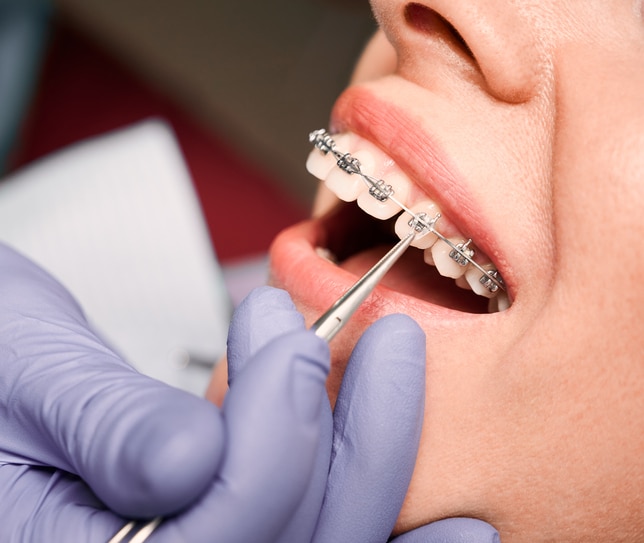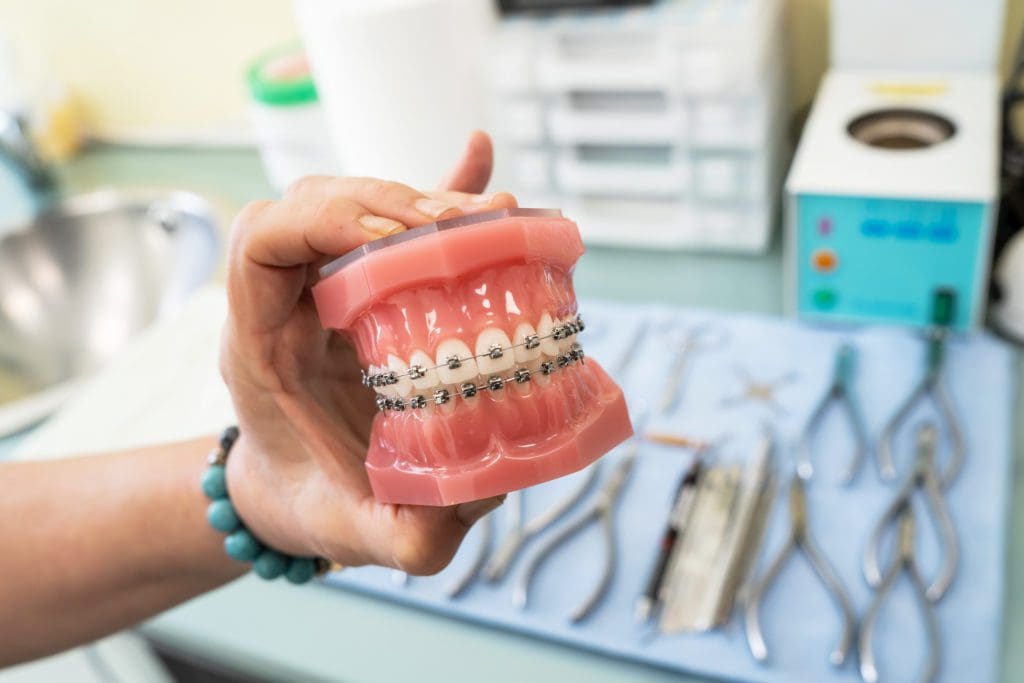How Cumming Orthodontics Addresses Common Braces and Invisalign Problems
How Cumming Orthodontics Addresses Common Braces and Invisalign Problems
Blog Article
Comprehensive Guide to Orthodontics Procedures for Fixing Dental Imbalances
In the world of orthodontics, the trip to attaining a completely aligned smile includes a myriad of treatments customized to correct dental misalignments. From typical braces to undetectable aligners and also medical options, the field of orthodontics provides an array of services to attend to differing levels of oral abnormalities. Understanding the intricacies of each treatment, including their mechanisms, benefits, and potential drawbacks, is vital in making notified decisions regarding one's orthodontic treatment. As we navigate with the detailed overview to orthodontic treatments for dealing with oral imbalances, the detailed information of each approach will certainly unravel, losing light on the course toward a practical and harmonious dental positioning.
Orthodontic Procedures Overview

In enhancement to clear aligners and conventional dental braces, orthodontists may likewise recommend various other interventions like headgear, palatal expanders, or retainers to attend to particular placement problems (braces). These treatments are tailored to every person's distinct demands and may include a mix of therapies to accomplish the desired outcomes. Normal adjustments and tracking are crucial parts of orthodontic therapy to ensure progression is on track and to make any type of essential modifications along the method. By undertaking orthodontic treatments, people can not only achieve a straighter grin yet additionally enhance their total dental wellness and function.
Conventional Braces: Exactly How They Work
When taking into consideration orthodontic treatments for oral imbalances, conventional dental braces attract attention as a time-tested approach for remedying teeth positioning. Typical braces consist of braces, wires, and bands that work together to use continuous stress on the teeth, progressively moving them into the wanted alignment. The braces are connected to the teeth making use of a special adhesive, and the cords are threaded through the brackets. By adjusting the tension of the cords, orthodontists can manage the instructions and force put on each tooth, directing them right into proper placement over time.
As stress is used to the teeth via the dental braces, the bone bordering the teeth is improved to sustain the brand-new tooth placements. Patients will require normal changes at the orthodontist's workplace to make certain the dental braces proceed to use the proper stress for reliable teeth activity.
Unnoticeable Aligners: Cons and pros
Unnoticeable aligners provide a very discreet and practical alternative to standard braces for fixing dental imbalances. These clear, customized trays are essentially invisible when put on, making them an enticing choice for individuals looking for an extra cosmetically pleasing orthodontic therapy. One of the primary benefits of undetectable aligners is their removability, enabling for easier maintenance of oral health contrasted to conventional braces. People can remove the aligners before eating or brushing their teeth, reducing the threat of food getting stuck in the device and simplifying the cleansing process.

Surgical Orthodontic Options
Surgical treatments in orthodontics existing feasible alternatives for resolving intricate dental misalignments that might not be effectively fixed with traditional orthodontic treatments. While invisible aligners and traditional braces can correct many orthodontic concerns, particular cases require surgical treatment to attain ideal results. Surgical orthodontic options are typically recommended for extreme malocclusions, substantial jaw inconsistencies, and situations where the underlying bone structure requires adjustment to accomplish proper placement.
One usual surgical orthodontic procedure is orthognathic surgical procedure, which includes repositioning the jaws to correct useful problems such as trouble eating or speaking. This surgical treatment is frequently performed in cooperation with an orthodontist who aids line up the teeth before and after the treatment. Surgical orthodontics may additionally involve treatments to subject influenced teeth, eliminate excess periodontal tissue, or improve the jawbone to produce an extra unified facial profile.
Prior to considering surgical orthodontic options, people go through a comprehensive analysis to identify the need and possible benefits of such treatments. invisalign. While surgical procedure may appear complicated, it can significantly enhance both the feature and aesthetics of the smile in situations where standard orthodontic therapies fall short
Retainers and Post-Treatment Care

Failure to comply with post-treatment treatment guidelines can result in regression, check my source where the teeth progressively relocate back in the direction of their initial placements. Constant retainer wear, great oral hygiene, and regular oral exams are necessary for keeping the outcomes achieved through orthodontic surgery and ensuring the lasting security of the remedied oral placement.
Conclusion
In conclusion, orthodontic procedures offer numerous alternatives for remedying dental imbalances. Typical braces use steel brackets and wires to change teeth into proper positioning. Unseen aligners offer a more discreet choice however might not appropriate for all instances. Surgical orthodontic alternatives are offered for a lot more severe imbalances. Retainers are typically used post-treatment to keep the new alignment. In general, orthodontic procedures can efficiently boost dental wellness and visual look.
As we navigate with the thorough guide to orthodontic treatments for correcting dental imbalances, the elaborate information of each method will unfold, losing light on the course toward a harmonious and useful dental placement. - orthodontics
One of the most typical orthodontic therapies is the usage of dental braces, which consist of metal brackets and cables that Visit Website use mild pressure to gradually move teeth into the preferred placement.When considering orthodontic treatments for dental misalignments, conventional dental braces stand out as a time-tested method for fixing teeth positioning. Furthermore, invisible aligners may not be suitable for complicated orthodontic concerns that call for even more substantial teeth activity, as they are generally suggested for moderate to moderate situations. Retainers are tailor-made orthodontic tools made to hold teeth in their dealt with placements after the conclusion of orthodontic therapy.
Report this page